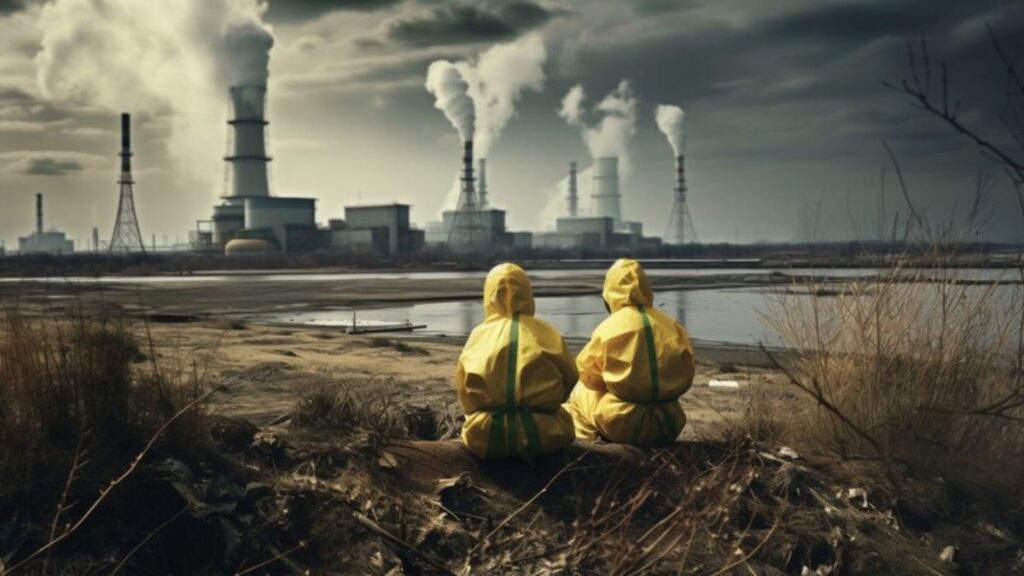In today’s rapidly changing world, air quality and pollution levels are growing concerns for cities across the globe. While some cities are taking meaningful steps toward sustainability, others continue to struggle under the weight of industrialization and urban growth. Two cities that stand out in this conversation—though in vastly different ways—are Dorsten, Germany and Fresno, California.
This article takes a closer look at Dorsten vs Fresno pollution, comparing their air quality, contributing factors, health impacts, environmental regulations, and community initiatives.
🌍 Introduction to Dorsten and Fresno
🏙️ Dorsten, Germany:
Dorsten is a mid-sized town in North Rhine-Westphalia, known for its green surroundings and relatively low population density. It benefits from Germany’s strong environmental policies, including emissions standards and investments in public transportation.
🌆 Fresno, California:
Located in the heart of California’s Central Valley, Fresno is an agricultural hub surrounded by vast farmland. However, it consistently ranks among the cities with the worst air quality in the United States, mainly due to vehicle emissions, industrial activities, and geographic factors that trap pollutants.
📊 Air Quality Index (AQI) Comparison
The Air Quality Index (AQI) provides a daily measure of air pollution. Here’s how Dorsten and Fresno compare:
| City | Average AQI | Primary Pollutants | Air Quality Rating |
| Dorsten | 20–40 | PM2.5, NO₂ (very low levels) | Good to Moderate |
| Fresno | 90–150+ | PM2.5, Ozone, NO₂ | Unhealthy for Sensitive Groups |
Dorsten often experiences “Good” AQI levels thanks to strong regulation and low industrial density.- Fresno, on the other hand, regularly sees AQI readings in the “Unhealthy” range, especially during summer and wildfire seasons.
🔍 Key Contributors to Pollution
🚗 Transportation
- Dorsten: High usage of public transportation, cycling infrastructure, and emission-free zones help keep traffic pollution low.
- Fresno: Car dependency is high, with limited public transportation options. This contributes significantly to smog and carbon emissions.
🏭 Industry and Agriculture
- Dorsten: Light industry with strict environmental controls.
- Fresno: Intensive agriculture and industrial activity release high levels of ammonia, pesticides, and particulate matter into the air.
🔥 Wildfires (Fresno only)
California wildfires significantly worsen Fresno’s air quality during summer months, adding to PM2.5 levels and making the air hazardous to breathe.
🏥 Health Impacts
Dorsten:
- Low pollution levels contribute to better respiratory and cardiovascular health.
- Children and elderly experience fewer air-quality-related health complications.
Fresno:
- Higher asthma rates, especially among children.
- Increased risk of stroke, lung cancer, and other chronic conditions linked to long-term exposure to PM2.5 and ozone.
- Disproportionate impact on low-income and minority communities.
🛑 Regulatory and Environmental Policies
🇩🇪 Germany (Dorsten):
- European Union Emissions Standards strictly limit the amount of pollutants released by vehicles and industry.
- Green zones restrict older, polluting vehicles from entering urban areas.
- Investment in renewable energy and sustainable urban planning.
🇺🇸 California (Fresno):
- California has some of the strictest air quality laws in the U.S., but enforcement varies.
- Local efforts like the San Joaquin Valley Air Pollution Control District promote cleaner technologies, but systemic challenges persist.
- Federal and state funding for clean-air programs often fall short of needs.
🌱 Community and Technological Initiatives
Dorsten:
- Emphasis on bicycle-friendly infrastructure and clean public transport.
- Participation in EU-funded green city projects.
- Local awareness campaigns promote low-emission living.
Fresno:
- Growing interest in electric vehicles and solar energy.
- Community groups pushing for environmental justice in underserved neighborhoods.
- Introduction of school air filtration programs and mobile air quality alerts.
📈 Future Outlook
Dorsten:
With continued support for clean technology and EU-wide climate goals, Dorsten is likely to maintain its position as a low-pollution city. Upcoming smart-city projects aim to further reduce carbon emissions.
Fresno:
Fresno faces a tougher battle. Climate change, ongoing wildfires, and infrastructural limitations will require bold action. However, increasing awareness and state-level support give hope for long-term improvement.
FAQ’s
1. Why is Fresno’s air quality worse than Dorsten’s?
Fresno’s air quality suffers due to high traffic emissions, industrial farming, and frequent wildfires, while Dorsten benefits from stricter environmental regulations, lower population density, and efficient public transport systems.
2. What is the main source of pollution in Dorsten, Germany?
Dorsten experiences low-level pollution primarily from light traffic and minor industrial activity, but it’s largely mitigated by Germany’s environmental policies and sustainable urban planning.
3. How do wildfires impact Fresno’s pollution levels?
Wildfires contribute significantly to dangerous spikes in PM2.5 levels in Fresno, leading to poor air quality that often reaches “unhealthy” or “very unhealthy” ratings during the dry season.
4. What are the health risks associated with poor air quality in Fresno?
Prolonged exposure to Fresno’s polluted air increases the risk of asthma, heart disease, stroke, and respiratory infections, especially in children, the elderly, and low-income communities.
5. Is Dorsten considered an environmentally friendly city?
Yes, Dorsten is recognized for its green spaces, bicycle infrastructure, and clean public transit, all supported by EU-wide emissions standards and climate initiatives.
6. Are there any clean air initiatives in Fresno?
Yes, Fresno is working on electric vehicle incentives, stricter emissions testing, and community-based air filtration programs, though challenges persist due to geography and funding.
7. How can Fresno improve its air quality long-term?
Fresno can benefit from expanding public transportation, adopting cleaner farming practices, improving wildfire management, and enhancing local environmental education.
8. Can residents in Fresno or Dorsten check real-time air quality?
Yes, both cities have access to real-time AQI monitoring tools through websites and mobile apps like AirVisual, AQICN, and government platforms.
Conclusion: A Tale of Two Cities
The Dorsten vs Fresno pollution comparison highlights the profound impact that geography, policy, and infrastructure have on air quality. While Dorsten serves as a model of clean urban living, Fresno represents the urgent challenges faced by many rapidly growing cities around the world. Improving air quality is not a one-size-fits-all solution—but learning from global examples can help shape better futures for cities like Fresno.
